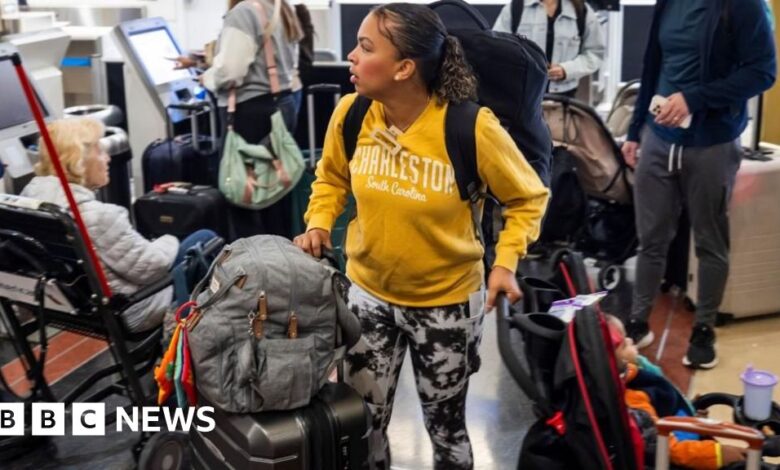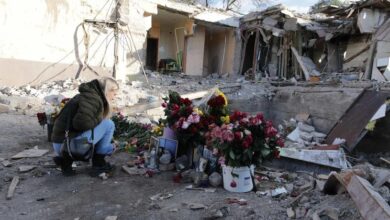‘Arctic outbreak’ forecast in some places as millions travel

Much of the eastern United States could experience a bout of bad weather as travelers hit the streets and airports for the Thanksgiving holiday.
The National Weather Service (NWS) has forecast “a significant arctic outbreak” in the northern Plains, during what are historically the busiest travel days of the year in the United States.
Meanwhile, heavy snow and rain are forecast across the Colorado Rockies on Wednesday – part of a weather system that will strengthen and move east after Thanksgiving Day. More than 10 inches (25 cm) of snow could fall in some areas.
Temperatures are also predicted to drop to lowest levels in many areas.
BBC weather forecaster Matt Taylor said the Arctic blast could send temperatures as low as -30F to -40F (-34C to -40C) in the northern plains and Upper Midwest.
The storm is expected to move into the Midwest, where it will also bring “lake-effect” snow and severe thunderstorms.
Places where large piles of snow may be seen include interior New England and Appalachia.
According to NWS, in the Midwest and Great Lakes region, sleet showers are likely to bring 4-8 inches of snow on Michigan’s northern coast.
The harsh conditions come at a busy time for travel.
According to FlightAware, the flight disruptions began on Wednesday, with more than 2,800 flights in the US delayed, although only 36 were cancelled.
The Federal Aviation Administration said delays could occur at airports across the US, including Denver, Colorado, Dallas, Texas, Boston, Massachusetts and Seattle. Newark Liberty Airport in New Jersey was also delayed due to lack of personnel.
The US Transportation Security Administration (TSA) said this year’s Thanksgiving holiday passenger traffic reached a record high.
The busiest days are expected to be Tuesday and Wednesday, before Thanksgiving, as well as the Sunday after the holiday. TSA is expected to screen nearly nine million people at airports during those three days.
Meanwhile, a record number of nearly 72 million Americans are expected to travel at least 50 miles (80 kilometers) by car during the week, according to insurer AAA. The expected increase is due to lower gas prices compared to last year’s Thanksgiving period.
I-90 between Cleveland and Buffalo and I-81 north of Syracuse may experience some travel disruptions as snow is expected in places south and east of the Great Lakes.
Thanksgiving rain and snow occurred in the eastern United States following a winter storm in California, on the west coast. This brought heavy snow to higher elevations early this week, as well as wind gusts as high as 50 mph (81 kph).
Central California was also hit by another “atmospheric river” on Tuesday after experiencing a similar phenomenon last week.
And in the Pacific Northwest, communities are still recovering from it bomb storm last weeka severe weather phenomenon that occurs when air pressure drops rapidly off the coast.
The storm caused massive flooding and lost power to hundreds of thousands of people.
Affected areas could face even more wet weather this week, as NWS predicts a low pressure system will bring coastal rain to Washington, Oregon and California.




